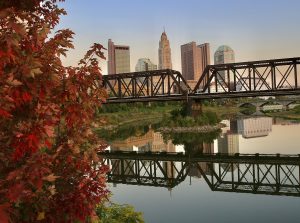
Your First Steps: A Beginner’s Guide to Investing in Commercial Real Estate
Are you eager to take your first steps into the dynamic world of commercial real estate as a beginner investor? This comprehensive guide will equip you with the knowledge and strategies you need to embark on your journey as a successful investor. We’ll explore the fundamentals, property types, and key strategies that will set you on the path to success in this dynamic and rewarding field.
Understanding Commercial Real Estate
Commercial Real Estate Basics
Commercial real estate comprises properties that generate income through leasing or renting. This field includes various property types, each with its unique characteristics. Let’s dive into some of the most common property types:
- Office Spaces: These include office buildings, suites, or co-working spaces designed for business operations. Office spaces often involve long-term leases, providing a stable and consistent rental income.
- Retail Properties: This category includes shopping centers, standalone stores, restaurants, and more. Retail properties frequently feature a mix of short-term and long-term leases, offering versatility along with unique management challenges.
- Industrial Properties: Industrial real estate comprises warehouses, manufacturing facilities, and distribution centers. Industrial properties often boast long-term tenants, resulting in a steady cash flow. They are known for their durability and essential role in supply chains.
- Multifamily Properties: These are residential buildings with multiple rental units, such as apartment complexes. Multifamily properties provide reliable rental income and benefit from the continuous demand for housing.
Key Metrics for Evaluation
To make informed investment decisions in commercial real estate, understanding key metrics is essential. Here are a few crucial metrics you should know:
- Cap Rate (Capitalization Rate): This metric helps assess a property’s potential return on investment. Calculated by dividing the property’s net operating income (NOI) by its market value, a higher cap rate generally implies a better return potential. It’s a valuable tool for comparing the relative profitability of different properties.
- Net Operating Income (NOI): NOI is the property’s income after accounting for operating expenses. It’s a fundamental metric for evaluating profitability and understanding the property’s earning potential.
- Cash-on-Cash Return: This metric compares the initial investment to the cash flow generated by the property. It’s calculated by dividing the annual pre-tax cash flow by the total cash invested.
Strategies for Beginner Investors
Education is Key
Begin your journey by building a solid foundation of knowledge in commercial real estate. Reading books, taking online courses, and attending local real estate events can provide you with valuable insights. Understanding the basics, including property types and key metrics, is fundamental.
Build a Knowledgeable Team
Commercial real estate often involves a team of professionals, including real estate agents, lawyers, accountants, and property managers. Surrounding yourself with experts can be invaluable for navigating this complex field. Their guidance and expertise are especially crucial for beginners.
Start Small
Consider commencing your investment journey with a smaller property. Starting small reduces risk and allows you to gain hands-on experience. Many successful investors started with modest properties and gradually expanded their portfolios.
Location Matters
The location of a property is a critical factor in its success. Research areas with growth potential and solid demand for the property type you’re interested in. A well-chosen location can significantly impact long-term value and profitability.
Due Diligence
Before making an investment, conduct thorough research on potential properties. Inspect the property, review financial documents, and assess the neighborhood. Rushing into a purchase without proper due diligence is a risk that should be avoided.
Financing Options
Explore financing options, such as mortgages and loans. Carefully evaluate interest rates, terms, and your own financial capability. Choose the financing method that aligns with your investment goals and risk tolerance.

Consider Partnerships
If you lack the necessary capital or experience, consider forming partnerships with more seasoned investors. Joint ventures can be a valuable learning experience. Partnering with someone with a track record in commercial real estate can provide mentorship and shared resources.
Property Management
Decide how you’ll manage your property. Property management can be demanding, and you must choose whether to handle it yourself or hire a property management company. Proper management is crucial for tenant satisfaction and the property’s long-term success.
Conclusion
Taking your first steps as a beginner investor in the world of commercial real estate is an exciting and potentially lucrative journey. With the right knowledge, guidance, and strategies, you can build a successful and profitable real estate investment portfolio. Commercial real estate offers a wide array of opportunities, and by understanding the fundamentals, exploring property types, and implementing sound strategies, you can embark on your investment journey with confidence.
Remember, commercial real estate is a dynamic sector that requires careful consideration, due diligence, and a willingness to learn and adapt. By grasping the basics, exploring property types, and employing sound strategies, you can take your first steps toward a rewarding investment journey in the ever-evolving world of real estate.
















